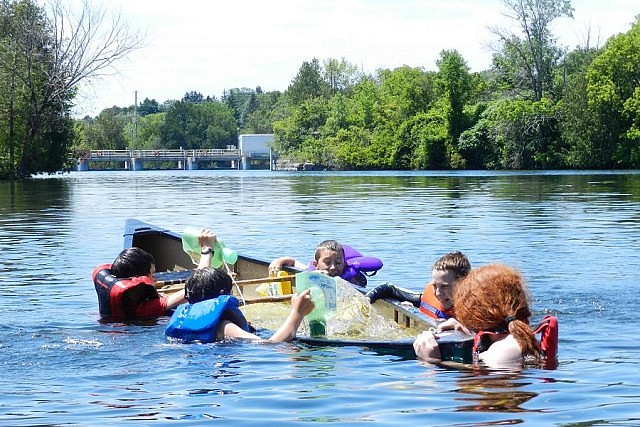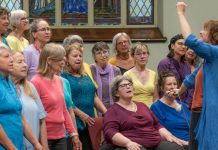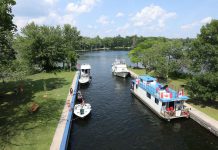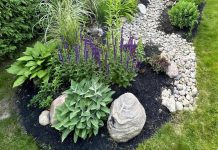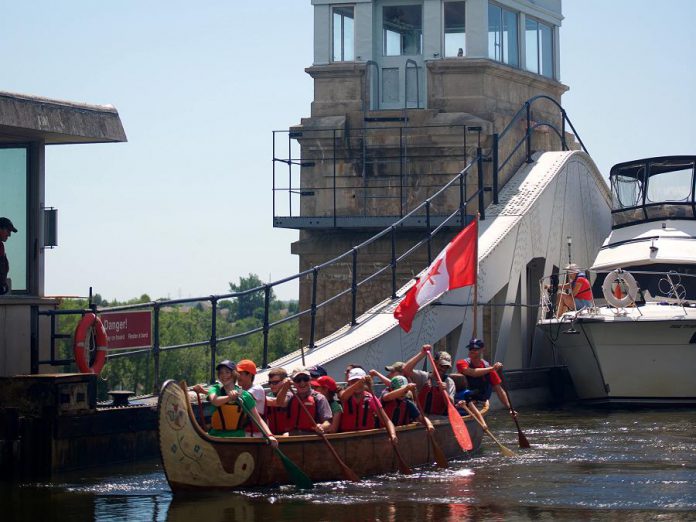
Hundreds of years ago, French Canadian voyageurs used large birchbark canoes on the Great Lakes and the Ottawa River to transport and trade furs. This summer, you can experience a taste of the voyageur’s life by taking the Voyageur Canoe Tour, one of many “on the water” programs offered by Peterborough’s Canadian Canoe Museum.
The museum began offering the Voyageur Canoe Tours as part of its on-the-water programming midway through the summer of 2015. Public programs manager Stacey Reynolds says they were so popular — 514 people took the tours that first year — that the museum decided to begin the tours more than a month earlier this year.
“We will run them three times a day every Friday, Saturday, Sunday, and holiday Monday from July 1 until Labour Day,” Reynolds says, adding that custom tours are also available outside the scheduled times until Thanksgiving.
In addition to the regular tours, there’s also a special Voyageur Canoe Paddle PA Day taking place on Friday, June 3rd for children and youth ages 8 to 14 (register at www.canoemuseum.ca/pa-days).
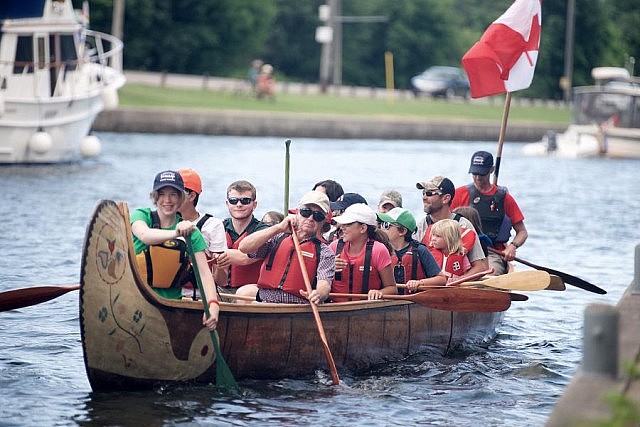
No previous paddling experience is necessary, as the guides teach basic paddling strokes and both paddles and lifejackets are provided. The tours are appropriate for all ages, say museum staff, and are made possible through a partnership between the museum and Parks Canada.
Reynolds says people often take the Voyageur Canoe Tour as a way to celebrate a reunion or a special occasion, or to welcome visitors to the area. It’s not every day people have the chance to paddle a canoe through the highest hydraulic boat lift in the world.
“People want to experience something unique to Peterborough,” Reynolds says. “This is certainly unique.”
For more information about the Voyageur Canoe Tours, visit www.canoemuseum.ca/voyageur-canoe-tours/.
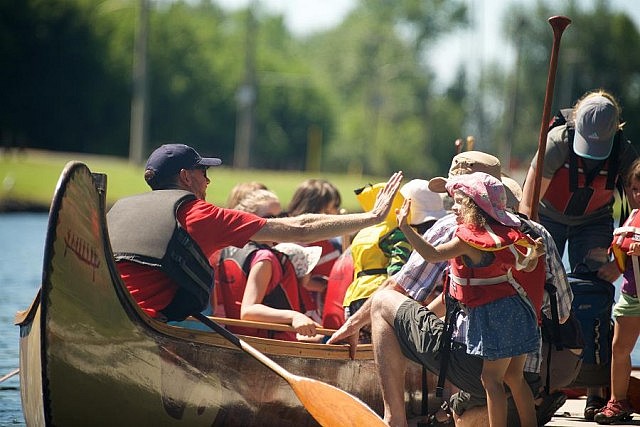
With easy access to the water, plans for the new facility include on-canal programming featuring canoe skills for all ages in both the winter and summer.
“We really are a marine museum,” Reynolds says. “It’s important to us as we look to move the museum onto the water that we seamlessly integrate that aspect into the new museum. Basically, we’re getting a head start on that with our water programs.”
Water programs extend to all ages, as the museum offers a wide variety of paddling day camps and multi-day trips for children ages 8 to 16 as well as canoeing courses for adults too.
Reynolds explains the children’s programs are designed to introduce young people to canoeing and paddling and, most importantly, to safety around the water. For the youngest campers, there are one-day camps; there are also four-day camps, week-long camps, and overnight trips, all aimed at instilling the skills of paddling and maneuvering a canoe through the water.
For campers with some experience, there are overnight camps to Kawartha Highlands Provincial Park that include practice in canoe-tripping, menu planning, and camping.

While there is enough to keep explorers, young and old, busy with the day and overnight canoeing camps — along with the Voyageur tours — Reynolds says the museum is always looking to refresh its water programming.
Hence, this year’s new whitewater experience that takes campers to the Madawaska River for a one-day whitewater canoe clinic followed by a five-day river trip.
“I envision continuing to grow camp programs by offering them more frequently with longer trips to different destinations,” Reynold says.
“Paddling helps us connect to the land,” she adds. “It’s the restorative aspect of paddling and nature that I think is drawing more and more people to us.”
